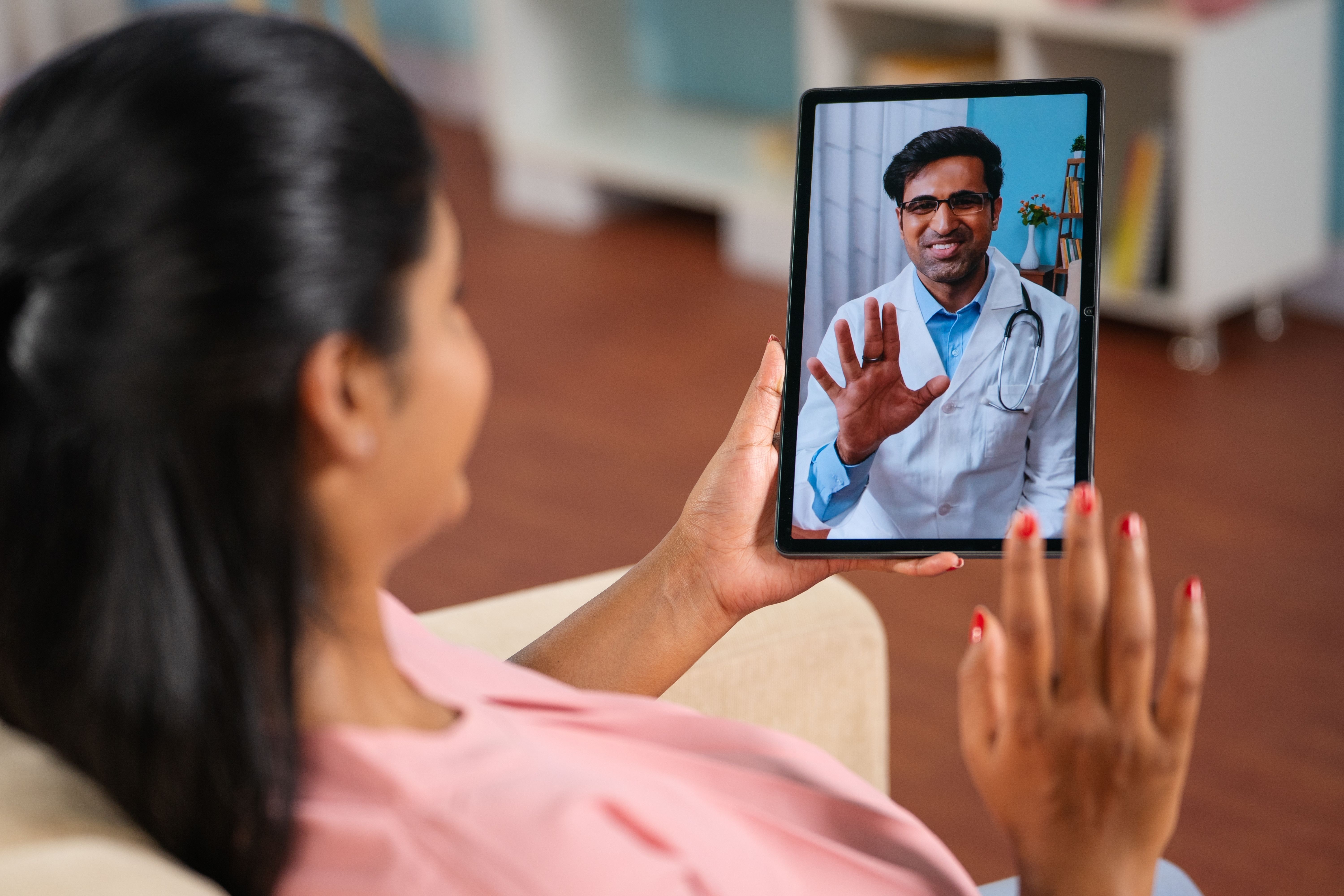Powering India’s Next Health Leap with a Digital First Healthcare System
- Published on - Jul 20, 2025
-
5 mins read
-
 Total views -
Total views -

India’s healthcare sector is undergoing a seismic transformation. While the market is expanding rapidly, the supporting digital infrastructure still has room to mature. A digital-first healthcare system has the potential to bridge long-standing gaps in access, efficiency, and patient outcomes. India can accelerate its next health leap by integrating smart, scalable technologies and unified digital platforms that serve patients and providers alike.
India’s healthcare market is surging but digital infrastructure lags
India’s digital health market is growing rapidly, with revenues estimated at USD 14.3 billion in 2024 and projected to reach USD 52.4 billion by 2030, expanding at a 24 percent CAGR1. Telehealth clearly leads this surge as hospitals, clinics and diagnostic centres explore ways to reach patients across the country. Yet many healthcare providers continue to rely on disconnected tools for booking, patient records and emergency operations.
Government initiatives are laying the groundwork for nationwide digital healthcare. Programs like Ayushman Bharat Digital Mission aim to assign unique health IDs to every citizen and integrate public health systems. More than 26 crore vaccine doses have been tracked digitally and over 31 crore teleconsultations have been conducted via eSanjeevani2. These efforts are accelerating the shift to cloud-based patient care.
Patients expect end-to-end digital care, from local clinics to super-specialty hospitals. Studies show more than majority of patients prefer digital appointment booking, online bill payment and receiving test results digitally. India now has over 800 million smartphone users and around most use mobile apps for managing health, which means hospitals must adapt or risk losing trust.
Telemedicine is bridging the urban–rural care gap faster than ever
India’s telemedicine market was valued at USD 1.54 billion in 2024 and is projected to grow at 20.8 percent annually3. The eSanjeevani platform alone has supported over 31 crore teleconsultations4. State-led initiatives in Telangana have enabled 87 lakh users by March 2025 from remote areas5. Nagpur’s municipal clinics delivered specialist care to 1821 patients in just three months via virtual consultation6.
Hospital systems remain fragmented and that slows growth. Most hospitals still use separate platforms for appointments, records, billing, diagnostics and emergency communication. This fragmented setup creates delays, repetitive work and increases cost. Studies show the typical provider engages with six to eight vendors, making compliance with laws like DPDP complex.
Unified Digital Infrastructure: Six Ways It Transforms Healthcare
1. Cloud based platforms offer secure, accessible care across locations
Leading providers are now moving patient records and operations to cloud platforms like Azure, which offer encryption, audit logs and role-based access. Research from PwC shows hospitals can save 15 to 20 percent on IT costs while improving uptime and efficiency.
2. A unified digital platform transforms the patient experience
When systems are connected, a patient can book via phone, WhatsApp or app and receive automated reminders and updates. IVR systems in medical workflows route calls efficiently behind the scenes, making the experience feel simple and human. Patients no longer face follow-up breakdowns or manual scheduling errors.
3. Emergency response becomes far more efficient with smart systems
In emergencies, time is critical. Hospitals using cloud tools can trigger alerts, update dashboards and notify doctors, nurses or ambulance teams instantly. This coordinated response improves decision making and saves valuable minutes.
4. Integrating diagnostics, lab and pharmacy systems improves clinical flow
Many digital providers now incorporate lab orders, reports and e-pharmacy into their platforms. For instance, Amazon India has introduced at-home diagnostics alongside teleconsultation services. These integrations reduce delays and support treatment adherence.
5. AI in healthcare is beginning to enhance diagnostics and chronic care
Indian startups are deploying AI tools for areas such as early disease detection, radiology, chronic illness management and virtual health coaching. AI chest X-ray tools have helped flag COVID-related anomalies, while others support screening for cancer or heart disease with fast, accurate insights.
6. Hybrid networks support scalable, cost-effective connectivity across branches
Hospitals are increasingly adopting hybrid models that use SD-WAN and leased Internet lines, enabling central monitoring while avoiding costly infrastructure at every location. This setup ensures consistent performance as clinics or branches expand.
When systems are united patients benefit, hospitals grow, and trust deepens
Integrated platforms reduce wait times and manual errors and give clinicians real-time access to complete patient data. Teams collaborate better, IT costs decline, and audit reporting becomes seamless. Patients receive faster, more transparent care and feel more connected to providers.
True digital transformation connects systems, people and data. Introducing a new tool is not sufficient. Lasting change occurs when records systems, communication channels, diagnostics, labs, pharmacy and analytics all work together. Healthcare IVR, EHR, telemedicine, AI and network systems should be parts of a unified platform. That is what creates real value.
India stands at a critical inflection point in healthcare. With over 800 million smartphone users and growing trust in telemedicine, the future is undeniably digital. But success hinges on secure, scalable, and patient-centric digital infrastructure that unifies fragmented systems into a seamless care experience. Whether in metro hospitals or rural clinics, investing in interoperable platforms, AI, cloud services, and smart connectivity is no longer optional, it’s essential. Only then can India deliver healthcare that is not only efficient and accessible but also deeply trusted by every citizen.
Tata Tele Business Services powers digital healthcare
We help hospitals, clinics and labs work better with secure internet, cloud communication and smart tools. Our solutions let patients connect easily and help teams stay in sync across locations.
References:



You may also like
Fill in your details to get a call back
Connect With Us
Connect on
WhatsApp
Mon - Fri
10 am - 6 pm
Connect on Whatsapp
Thank you for submitting your details. Please check your WhatsApp messenger
Please Fill in Your Details and We'll Call You Back!
Great! Your details have been submitted successfully.
You will soon
hear from us.
Please Fill in Your Details and We'll Call You Back!